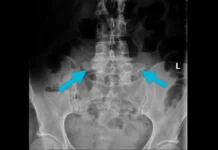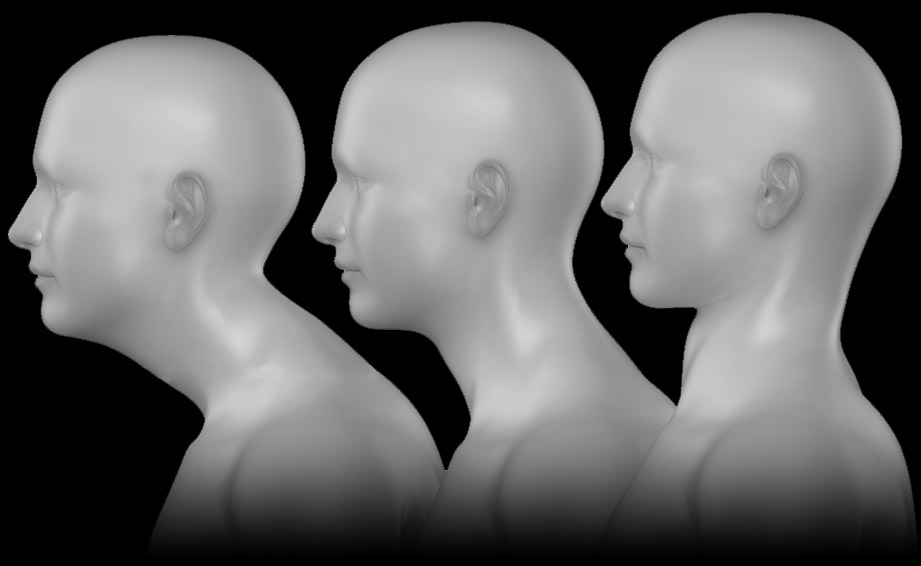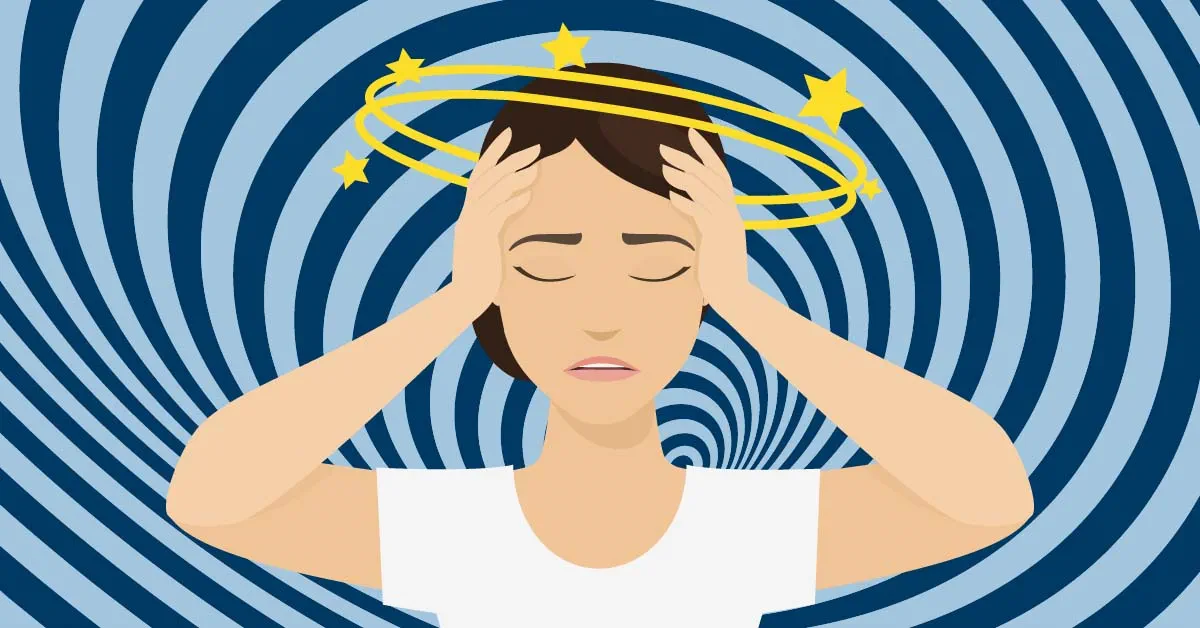Cervicogenic dizziness is dizziness that originates in the neck or cervical spine. This dizziness may be associated with neck disorders such as muscle tension, joint problems or cervical nerve dysfunction. Here is some information about cervicogenic dizziness.
Introduction
Cervicogenic dizziness is a form of dizziness whose origin is attributed to localized problems in the neck, specifically involving the cervical spine. Although the exact pathophysiology of this vertigo is not completely understood, several elements suggest that it results from dysfunctions within the cervical structures, including the joints, muscles and ligaments of the neck.
Cervicogenic dizziness differs from classic dizziness, which is usually associated with inner ear problems. In the case of cervicogenic dizziness, the connection between the neck and the vestibular system, responsible for balance, is at the heart of the problem. Movements of the cervical spine, when disrupted or altered, can send erroneous signals to the brain, thereby inducing a feeling of dizziness.
Triggers for cervicogenic dizziness are often linked to cervical trauma, such as car accidents, falls or sports injuries. However, they can also be caused by chronic neck disorders, such as cervical spondylosis, muscle strains or herniated cervical discs.
Symptoms of cervicogenic dizziness can vary from person to person. Some patients describe a sensation of their surroundings rotating or tilting, while others experience general instability. Often, this dizziness is accompanied by headaches, neck stiffness and sometimes visual disturbances.
Diagnosis of cervicogenic dizziness is often challenging due to the diversity of symptoms and the complexity of the cervical system. Healthcare professionals, such as neurologists, orthopedists and osteopaths, can play a crucial role in the clinical assessment of this dizziness. Thorough examinations, specific tests and radiological investigations may be necessary to rule out other potential causes of dizziness and confirm the neck connection.
Treatment for cervicogenic dizziness generally aims to alleviate symptoms, restore cervical function, and prevent future episodes. Therapeutic approaches may include physical therapy, which focuses on cervical rehabilitation, muscle relaxation techniques, and possibly medications to relieve pain and reduce inflammation.
It is important to emphasize that treatment for cervicogenic dizziness should be tailored to each individual, taking into account the specific nature of their symptoms, the underlying cause and their overall health. Collaboration between different healthcare professionals can play a key role in the holistic management of this condition, aiming to improve the quality of life of those affected by cervicogenic dizziness.
Pathophysiology of cervicogenic dizziness
Here are some possible mechanisms that could contribute to cervicogenic dizziness:
- Impaired proprioceptive receptors: Cervical joints are rich in proprioceptive receptors, which provide the brain with information about head position and movement. Dysfunctions in these receptors can lead to poor perception of head position, which can contribute to dizziness.
- Nerve irritation: Irritation of the cervical nerves can occur due to problems such as cervical spondylosis, herniated discs, or muscle strains. This nerve irritation can disrupt signals sent to the brain, leading to feelings of dizziness.
- Alterations in blood flow: Cervical problems can also affect blood flow to the brain. Reduced blood flow can lead to decreased oxygen supply to the brain, which can cause dizziness.
- Impaired neck and eye reflexes: Reflexes between the neck and eyes are important for maintaining balance. Disturbances in these reflexes can lead to feelings of dizziness.
- Muscle strain: Excessive muscle tension in the cervical region can influence the stability and movement of the head, contributing to dizziness.
Causes of cervicogenic dizziness
Cervicogenic dizziness can have several causes, mainly related to problems in the cervical (neck) region. Here are some possible causes:
- Joint problems: Abnormalities in the cervical joints, such as osteoarthritis or joint dysfunction, can lead to dizziness.
- Muscle tension: Tight neck muscles, especially those in the cervical region, can cause dizziness.
- Nerve compression: Compression of the cervical nerves can cause dizziness symptoms.
- Neck trauma: Neck injuries, such as whiplash, can damage cervical structures and cause dizziness.
- Poor posture: Improper posture, especially during prolonged activities such as using a computer, can contribute to cervicogenic dizziness.
- Cervical vertebrae dysfunction: Problems with the cervical vertebrae, such as instability or subluxation, can cause dizziness.
- Cervicogenic headaches: Neck-related headaches may be accompanied by dizziness.
- Inflammation: Inflammation of tissues in the cervical region can influence balance and cause dizziness.
“When I lean forward, I feel like everything is spinning and I have to hold on to something.”
“It’s like I’m constantly seasick.”
“If I tilt my head back, I feel like I’m going to pass out.”
Factors provoking cervicogenic dizziness
- Vestibular – turning in bed, lying on one side, moving quickly, walking in busy places, lying down.
- Cervicogenic – rapid head movement, increased neck pain, certain neck positions, headaches, sitting and standing,
- Cardiac – sitting, grounding, coughing, sneezing, stress, certain neck positions (if VBI).
- Psychiatric – if anxious, walking in busy places, stress.
Symptoms of cervicogenic dizziness
Cervicogenic dizziness can manifest with a variety of symptoms that are usually related to problems in the cervical (neck) region. Here are some common symptoms of cervicogenic dizziness associated with cervicogenic dizziness:
- Dizziness: A feeling of spinning or unsteadiness, often triggered by neck movements.
- Cervicogenic headaches: Headaches localized in the cervical region that can radiate toward the top of the skull.
- Neck pain: Pain or tension in the neck area, often associated with specific movements.
- Dizziness: Feelings of disorientation or lightheadedness.
- Nausea: Some people may experience nausea, especially during neck movements.
- Balance problems: Difficulty maintaining balance, especially when changing position or making sudden movements.
- Sensitivity to light and sound: Hypersensitivity to light (photophobia) and sound (phonophobia) can sometimes accompany cervicogenic dizziness.
- Eyestrain: Eyestrain can occur due to tension in the cervical region.
It is important to note that these symptoms may vary from person to person, and other medical conditions may also present with similar symptoms.
Diagnosis of Cervicogenic Dizziness
Cervicogenic dizziness is a condition characterized by dizziness or unsteadiness originating from issues in the cervical spine (neck region). Since the symptoms of cervicogenic dizziness can overlap with other types of vertigo and vestibular disorders, diagnosing this condition requires a thorough assessment by healthcare professionals. This section explores the diagnostic process for cervicogenic dizziness, highlighting the importance of clinical evaluation, differential diagnosis, and diagnostic tools.
1. Clinical History and Symptom Review
The first step in diagnosing cervicogenic dizziness is a comprehensive review of the patient’s medical history and a detailed assessment of symptoms. Patients often report a sensation of unsteadiness, imbalance, or dizziness triggered by neck movements or positions. These symptoms may be accompanied by neck pain or stiffness, headaches, or a history of neck trauma, such as whiplash injuries or cervical spine degeneration.
Healthcare providers typically ask patients about the following:
- The onset, frequency, and duration of dizziness episodes.
- Any specific movements or positions that trigger symptoms.
- Coexisting symptoms, including headaches, neck pain, or visual disturbances.
- History of trauma or injuries to the cervical spine.
The key here is identifying a correlation between neck pain or stiffness and episodes of dizziness. A lack of neurological or vestibular symptoms such as hearing loss or ringing in the ears may also help differentiate cervicogenic dizziness from other causes of vertigo.
2. Physical Examination
A thorough physical examination is essential in the diagnosis of cervicogenic dizziness. This includes both a neurological and a musculoskeletal assessment, with a special focus on the cervical spine.
Key aspects of the physical examination include:
- Cervical Range of Motion (ROM): Evaluating the patient’s ability to move their neck through its full range of motion. Pain, stiffness, or limitations in ROM may point to cervical spine dysfunction.
- Palpation of the Cervical Spine: Examining the neck for tenderness, muscle tightness, or joint dysfunction. Specific trigger points, which may reproduce dizziness when palpated, can provide important clues.
- Vestibular Testing: Assessing balance and eye movements to rule out vestibular causes of dizziness. Tests like the Dix-Hallpike maneuver can help exclude conditions like benign paroxysmal positional vertigo (BPPV).
The physical examination should also include assessments of posture and gait to detect any compensatory patterns related to cervical dysfunction.
3. Diagnostic Imaging
Although diagnostic imaging is not always necessary, it can be helpful in identifying underlying structural problems in the cervical spine that may contribute to dizziness. Common imaging techniques include:
- X-rays: These are often used to assess the alignment of the cervical spine and to detect any degenerative changes, such as osteoarthritis, that could cause dizziness.
- MRI (Magnetic Resonance Imaging): This provides a more detailed view of soft tissues, including discs and nerves. It is useful in diagnosing conditions like herniated discs or cervical spinal cord compression.
- CT Scans (Computed Tomography): In certain cases, a CT scan may be ordered to better visualize bone structures or rule out fractures.
4. Diagnostic Blocks
In some cases, diagnostic blocks can be used to confirm cervicogenic dizziness. This involves injecting a local anesthetic into the suspected cervical joint or muscle. If the patient’s dizziness improves following the injection, it supports the diagnosis of cervicogenic dizziness.
5. Exclusion of Other Conditions
A key part of diagnosing cervicogenic dizziness is ruling out other potential causes of dizziness. These include:
- Vestibular Disorders: Conditions affecting the inner ear, such as BPPV, Meniere’s disease, and vestibular neuritis.
- Neurological Disorders: Strokes, multiple sclerosis, and other central nervous system conditions.
- Cardiovascular Causes: Orthostatic hypotension or arrhythmias can also cause dizziness.
To rule out these conditions, healthcare providers may order additional tests, such as audiometric testing, vestibular function tests, or blood pressure monitoring.
Osteopathy for the treatment of cervicogenic dizziness
Cervicogenic dizziness can be treated with osteopathic techniques aimed at relieving tension and dysfunction in the cervical spine. Here are some osteopathic techniques that could be used:
- Joint mobilizations: Passive movements can be used to mobilize the cervical joints and restore their range of motion.
- Neck Muscle Release: Muscle release techniques can be applied to relax tense neck muscles.
- Stretching: Stretching exercises may be recommended to improve neck flexibility and reduce pressure on cervical structures.
- Work on posture: The osteopath can give advice on improving posture to prevent excessive tension in the neck.
- Overall assessment: The osteopath can assess other regions of the body likely to influence dizziness, such as the thoracic region or the temporomandibular joint.
Each patient is unique, and osteopathic treatment will be tailored based on individual assessment.
Conclusion
In conclusion, cervicogenic dizziness represents a complex diagnostic and therapeutic challenge. Although the exact pathophysiology of this dizziness is still incompletely understood, it is clear that dysfunctions in the cervical spine play a crucial role in their appearance. The varied symptoms, often triggered by cervical trauma or chronic neck disorders, make accurate diagnosis essential.
The process of diagnosing cervicogenic dizziness requires a multidisciplinary approach, involving specialized healthcare professionals such as neurologists, orthopedists and osteopaths. Thorough examinations, specific tests and radiological investigations are often necessary to confirm the link between symptoms and cervical problems.
Treatment of cervicogenic dizziness aims to relieve symptoms, restore cervical function and prevent recurrence. Therapeutic approaches, such as osteopathy, muscle relaxation and possibly pharmacological interventions, are tailored to each individual based on the specific nature of their symptoms and the underlying cause.
It is essential to emphasize that collaboration between different health professionals is crucial for holistic care. Individual approaches must be integrated into a comprehensive plan aimed at improving the quality of life of people affected by cervicogenic dizziness. By continuing to explore the underlying mechanisms and refine therapeutic approaches, the management of this condition can advance, providing an optimistic outlook for affected patients.


























